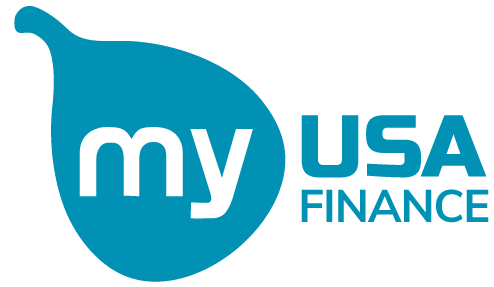Home purchasing is a significant milestone for many people, and navigating the home-buying process can be exciting and overwhelming. One of the key phrases you’ll encounter during this journey is “clear to close.”
Let’s look at what clear to close means, its importance, and what happens after completing the process.
Understanding Clear to Close
Clear to Close: What Does it Mean?
“Clear to close” means that the lender has reviewed and approved all the documentation and requirements for your home loan application.
Once you are clear to close, the lender is ready to proceed with the closing process, where you will sign the necessary paperwork and finalize the purchase of your new home.
The Importance of the Clear to Close Stage
Reaching the Clear to Close stage is a significant achievement in the home loan journey. It demonstrates that your application has successfully met the lender’s criteria and satisfies all the necessary legal and financial obligations.
This milestone provides both you and the seller with the assurance that the financing aspect of the home purchase is in order.
The Clear to Close Process
Overview of the Key Clear to Close Steps
The clear to close process involves several important steps that lead to the final approval of your home loan. Understanding these steps will give you a clearer picture of what to expect. Here are the key steps involved:
Application Review
During the application review stage, the lender carefully examines your application to ensure all the required information is accurate and complete. Any discrepancies or missing details are addressed at this stage.
Financial Verification
Financial verification is a crucial step where the lender meticulously verifies your financial information, including income, assets, and debts. According to the lender’s guidelines, this assessment determines your ability to repay the loan.
Providing accurate and up-to-date financial documents is essential during this stage.
Property Appraisal
As part of the clear to close process, a property appraisal is conducted to determine the fair market value of the property you intend to purchase. This evaluation ensures that the loan amount does not exceed the property’s worth, protecting both the lender and the buyer.
Title Search: Confirming Ownership Rights
A title search is performed to confirm that the property’s title is clear and free from any liens or legal issues that could affect your ownership rights. This step ensures no unforeseen complications are associated with the property’s ownership, providing you with peace of mind.
Underwriting: Evaluating Risk and Stability
Underwriting is a critical step where the lender’s underwriting team assesses the risk associated with your loan application. They evaluate your creditworthiness, employment history, and overall financial stability.
This evaluation helps the lender determine the level of risk involved in granting you the loan.
Conditions and Compliance
Sometimes, the lender may require additional documentation or have specific conditions to be fulfilled before granting the clear to close status. It is important to be aware of these conditions and provide all the necessary information to meet the lender’s requirements.
Final Review and Approval: Granting the Clear to Close Status
Once all the necessary checks, verifications, and conditions have been completed, the lender reviews your application. If everything meets their criteria and there are no outstanding issues, the lender grants the clear to close status, indicating that they are ready to proceed with the closing process.
Understanding the key steps involved in the clear to close process will help you navigate the journey with confidence and ensure that you are prepared for each stage.
Tips for a Smooth Clear to Close Process
To ensure a smooth clear to close process, consider the following tips:
- Stay organized: Keep all your documents and communications in one place, so you can easily access and provide them when needed.
- Communicate with your lender: Maintain open lines of communication with your lender throughout the process and promptly address any questions or concerns they may have.
- Be proactive: Complete all required tasks as soon as possible to avoid delays in the clear to close process.
- Work closely with your real estate agent: Your agent can help guide you through the process and ensure all parties involved are on the same page.
What Happens After You’re Clear To Close?
The mortgage process is nearly complete once you’ve received notification from your lender that you’re ready to close. However, there are still a few important steps left to complete.
Closing Disclosure
After receiving a clear to close, your lender will provide a Closing Disclosure.
This document outlines your loan’s final terms and details, including the loan amount, interest rate, monthly payment, and closing costs. It is essential to review this document carefully, as it allows you to:
- Verify the accuracy of your loan terms: Double-check that the loan amount, interest rate, and other details match what you agreed upon with your lender. Any discrepancies should be addressed immediately.
- Understand your closing costs: The Closing Disclosure will itemize all fees and costs associated with the transaction. Ensure that you understand these expenses and that they align with your expectations.
- Prepare for the funds needed at closing: The document will also indicate the total amount of money you need to bring to the closing meeting. Make arrangements to have these funds in the required form (e.g., cashier’s check or wire transfer).
Make sure you understand the closing disclosure. Review documents carefully before signing to avoid mistakes or discrepancies with your repayment plan.
Final Walkthrough
Regardless of whether you buy the house as-is or not, you should always do a final walkthrough after you receive the Closing Disclosure to make sure the property is in the condition both of you agreed upon. Although walkthroughs aren’t technically required after you’re ready to close, skipping one could result in a costly mistake.
The final walkthrough allows you to:
- Verify the property’s condition: Ensure that the home is in the same condition as when you last saw it and that no damage has occurred.
- Confirm any agreed-upon repairs: If the seller agrees to make repairs or improvements as part of the purchase agreement, verify that these have been completed to your satisfaction.
- Check for any remaining personal property: The seller should have removed all personal belongings from the property. If any items remain, address this with your real estate agent.
Assuming everything is good with the home at the time of the final walkthrough, this will be your last opportunity to catch any problems before they become your responsibility.
Closing Day
The closing meeting is the final step in the home buying process. During this meeting, you will sign the necessary documents to finalize your mortgage and transfer ownership of the property.
To ensure a successful closing, keep the following points in mind:
- Bring required identification and funds: You will need to present a valid government-issued photo ID and the funds required for closing, as indicated on the Closing Disclosure.
- Review and sign documents: You will be presented with several documents to review and sign, including the promissory note, the mortgage or deed of trust, and the Closing Disclosure. Take your time to read and understand each document, and ask questions if anything is unclear.
- Address any last-minute concerns: If issues arise during the closing meeting, such as document discrepancies or unresolved matters from the final walkthrough, address them immediately with your real estate agent and lender.
The final meeting, known as the closing day, is focused on finalizing any unfinished tasks and making the deal official. This involves completing paperwork, updating the property deed, and settling your down payment and closing expenses.
Can a Lender Still Deny Your Loan After the Clear-to-Close Status?
Home buyers that have possessed the clear-to-close stage aren’t usually denied after their loan is approved and they’ve signed the closing disclosure.
However, there are circumstances where a lender may still decline an applicant at this stage, even after clear to close has been granted. These rejections are typically caused by drastic changes to your financial situation. Leaving your job, applying for a new large credit line, or taking out another loan can all be red flags for your mortgage lender.
If it’s possible, you should avoid making any drastic changes until the house is officially yours.
Final Thoughts: What to Expect and What to Do Next After Clear To Close
Reaching the “Clear To Close” stage is an exciting milestone on your journey to homeownership. It represents the final steps before becoming a proud homeowner.
By understanding what to expect and what happens after “Clear To Close,” you can navigate the closing process with confidence and ease. Remember to stay organized, communicate effectively with all parties involved, and enjoy the anticipation of starting a new chapter in your dream home.
Read More: Home Improvement Financing: Home Renovation Loan Basics











